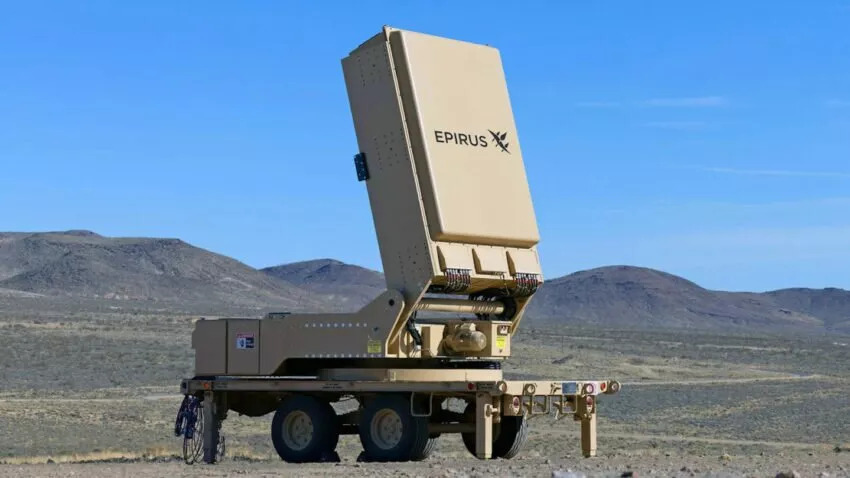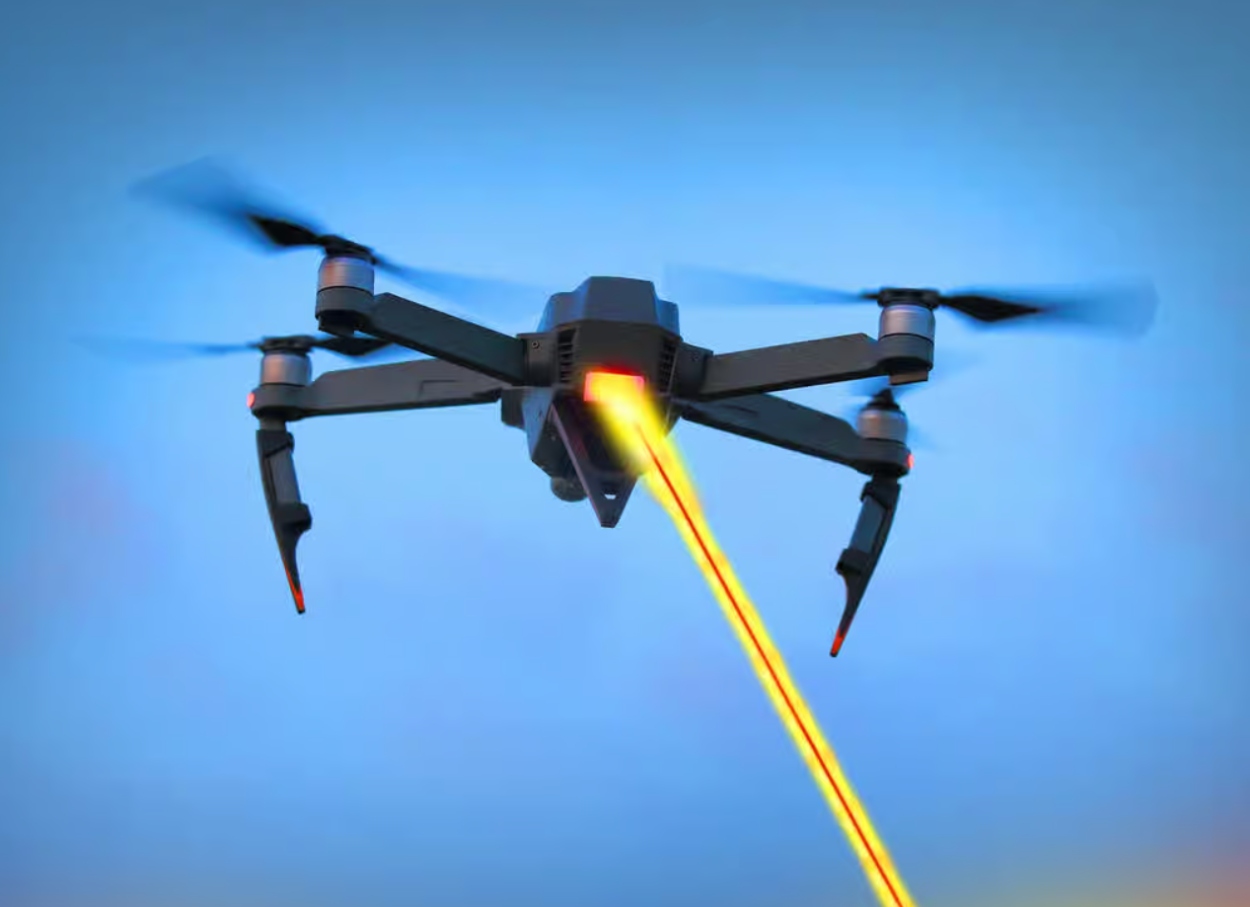The proliferation of unmanned aerial vehicles (UAVs) and cheap commercial drones for military use has spurred the US Army to acquire a counter-drone system that can bring down the aircraft ‘non-kinetically.’
It received the Leonidas system from private defense technology company Epirus and is slated to receive three more. The “high-powered microwave” (HPM) weapon has specifically been designed to protect soldiers and facilities from “drone swarms.”
HPMs are intense, precise beams that, when targeted at an object, can ‘fry’ its internal electronics and components, rendering it useless and possibly causing it to veer out of control.
Active Electronically Scanned Array (AESA) radars on fighter jets can often double up as HPM weapons, where the pilot can direct all energy onto a particular emitter from the radar to target an incoming missile.
The US Army’s US$ 66.1-million project, Indirect Fire Protection Capability-High-Power Microwave (IFPC-HPM), requires Epirus to supply four Leonidas prototypes over three years. This is part of a larger initiative by the Rapid Capabilities and Critical Technologies Office (RCCTO) to have layered air defense protecting forward bases, troops, and formations.
The IFPC-HPM system comprises a high-power microwave source, power and thermal subsystem, and an antenna subsystem interoperable with a battle management command, control, and communication software.
US Army’s Drone Fryer
The US Army’s broader project includes the development of a 300 kilowatt-class laser under the IFPC-High-Energy Laser (HRL) effort and a 50 kilowatt-class laser under the Directed Energy Maneuver-Short Range Air Defense (DE M-SHORAD).
For HPM, the Army’s yet-to-be-approved fiscal 2024 budget request includes nearly US$11.2 million for IFPC-HPM development, following its planned US$41.4 million investment in FY23.
A company spokesman quoted in a Breaking Defense report said the plan is to deliver the second directed energy weapon to the RCCTO by late December and have the “full platoon of four IFPC-HPMs (ready by) early next year.”
This would also make the Leonidas one of the few counter-drone systems with an HPM since most have jammers that jam the communication channels, block or spoof the Satellite Navigation signals (soft kills), or high-powered lasers (hard kills).

“The IFPC-HPM platoon will undergo capabilities and limitations testing by the Army to develop tactics, techniques, and procedures for how the capability will be used in theater as part of a layered defense posture for the counter-UAS mission,” the spokesman said.
Land Is The New Domain
The role of the US Army has again risen to prominence given the land war in Europe between Russia and Ukraine, where many strategists pointed out how a clash with Russia will see the ground as the dominant terrain.
Russia, too, has been noted to have been anticipating an eventual clash with the US and the North Atlantic Treaty Organization (NATO), touched upon in a previous EurAsian Times article.
Europe War Means Facing Russian Swarm Drones
Moscow has evolved as a rising drone power, with state-owned defense industry and private organizations introducing sophisticated and cheap, mass-produced UAVs that can achieve many tactical battlefield goals with a high cost-to-benefit ratio.
Even Ukraine demonstrated ingenuity by employing commercially off-the-shelf UAVs, and the US military will face large-scale drone attacks on its installations during any conflict.
The Breaking Defense report validated this assessment. “A proliferation of low-cost drones has, in part, prompted service leaders to seek out new ways to take them out before they kill soldiers or damage facilities.
“While several initiatives are underway, including in the directed-energy space, the service is pursuing an umbrella category of IFPC capabilities that includes a kinetic interceptor, a high-energy laser, and the high-power microwave option by Epirus.”
“IFPC-HPM will provide the Army with HPM prototype weapon systems for the short-range defense of fixed and semi-fixed sites from unmanned aircraft system (UAS) swarms,” the US Army wrote.
“IFPC-HPM provides much-needed protection against adversarial UAS swarms capable of targeting and overwhelming US and allied air defense systems,” it later added.
Advanced Weapon Means Complicated Handling
Epirus also revealed a more extensive user interface and ergonomics-oriented effort to make the system more operation-friendly and maintainable, given the logistical requirement for manageable supply chains.
Lt. Gen. Daniel Karbler, the head of the US Army’s Space and Missile Defense Command and Joint Functional Component Command for Integrated Missile Defense, had told reporters in August about the field complications of using Directed Energy Weapons (DEW).
“Lasers are complicated. This is not a Humvee that’s sitting in the motor pool. Many of the main (laser) components (will not) have a supply room or maintenance office full of repair parts. Those are going to be going to have to be built out.”

Epirus has taken these factors into account, kept the “modern warfighter in mind,” and designed its HPM hardware and software interfaces as “intuitive, straightforward, secure and reliable.”
“The government acceptance test was a critical validation of system effectiveness, safety for friendly personnel and assets and (Forward Area Air Defense Command and Control) FAAD C2 integration,” he added.
“Since contract kickoff, we’ve hosted several soldier touchpoints with RCCTO technologists where they familiarized themselves with the system and provided critical operator feedback to improve the systems — term testing and future operational capabilities,” the spokesman wrote.
- The author can be reached at satamp@gmail.com
- Follow EurAsian Times on Google News




